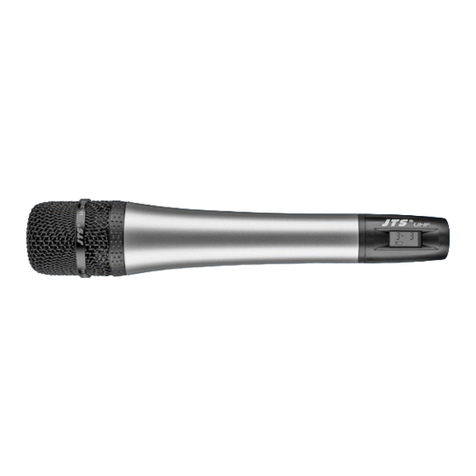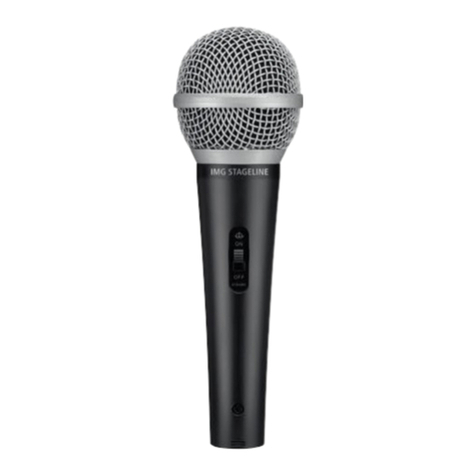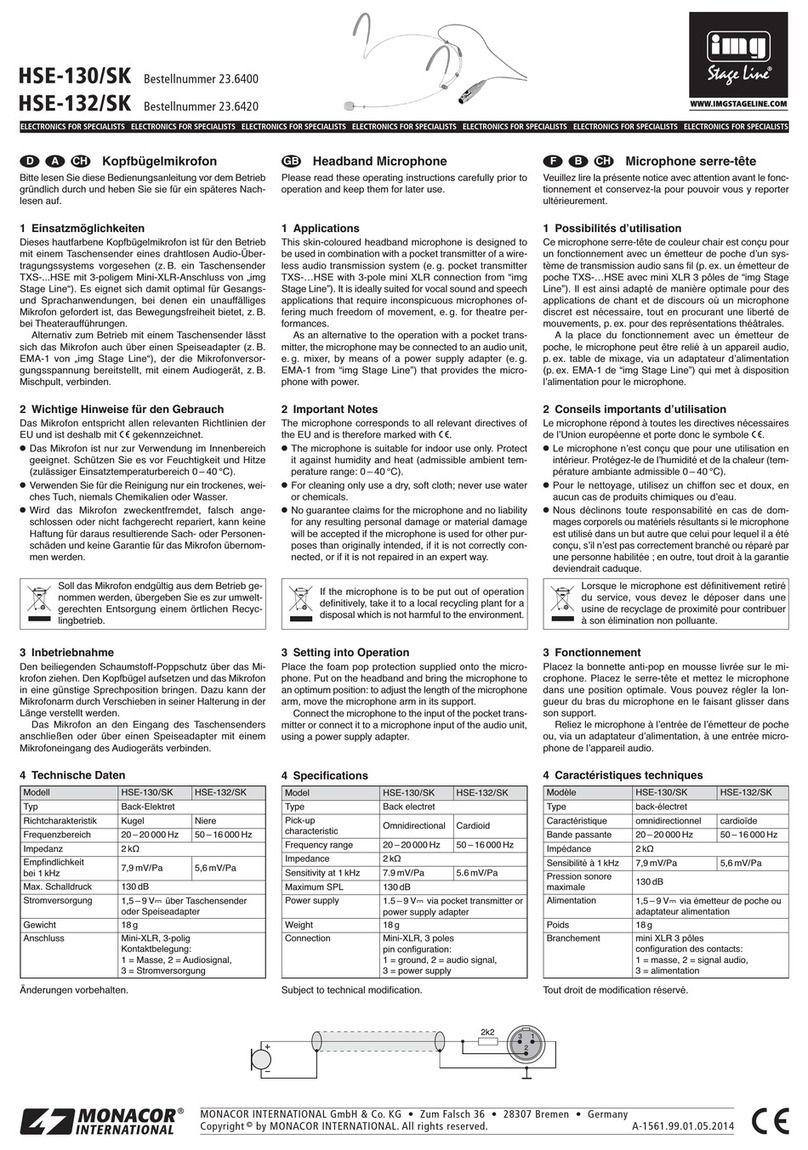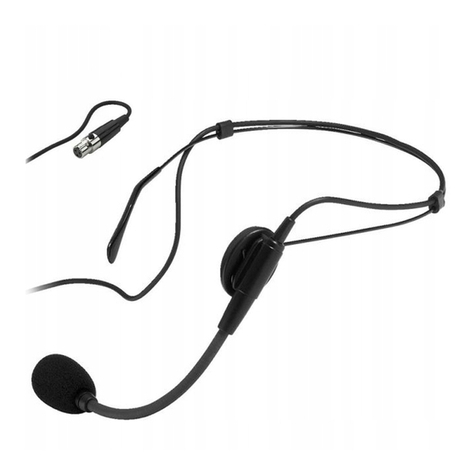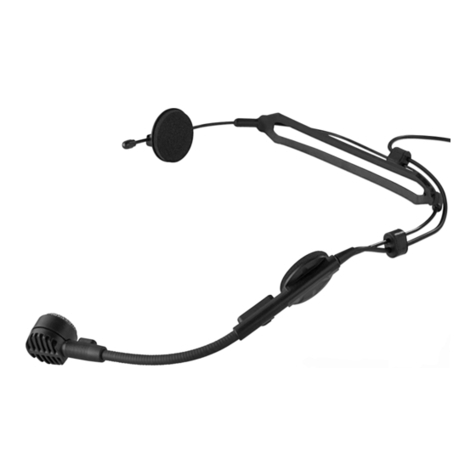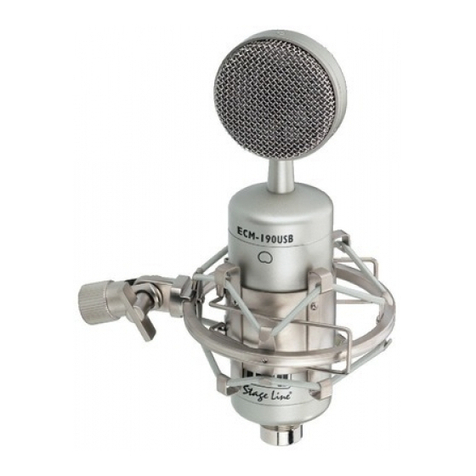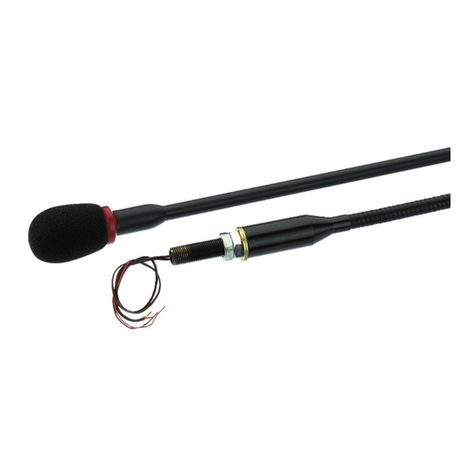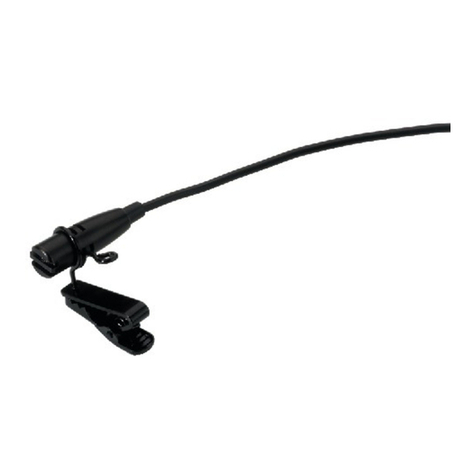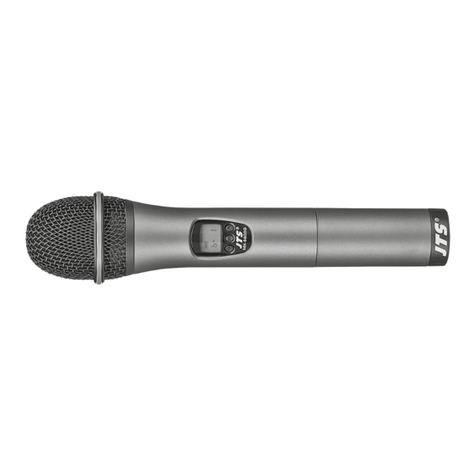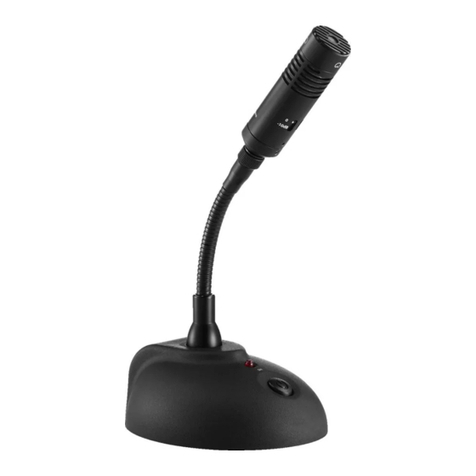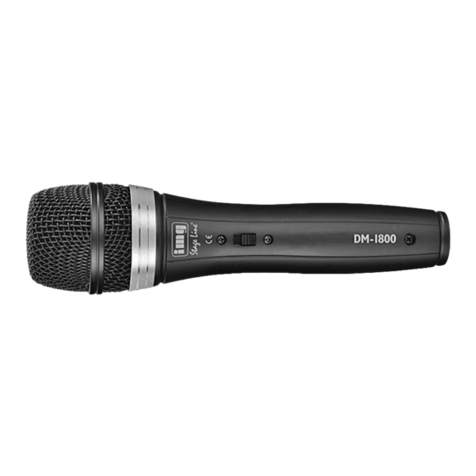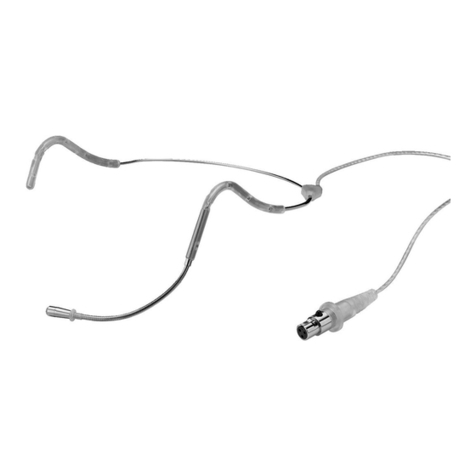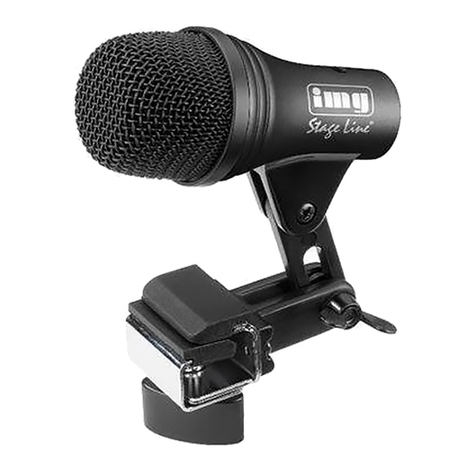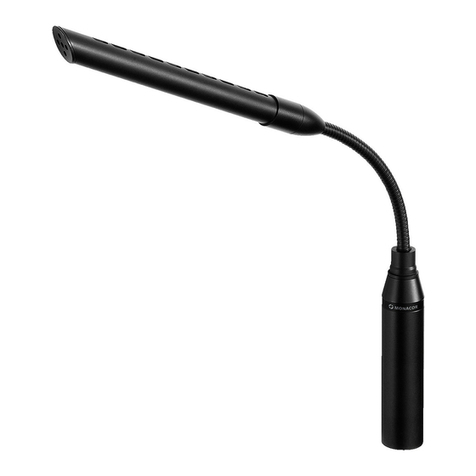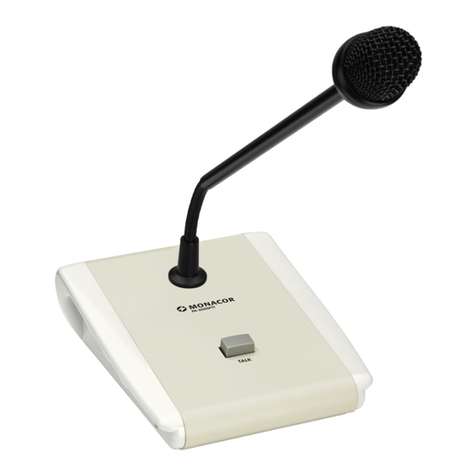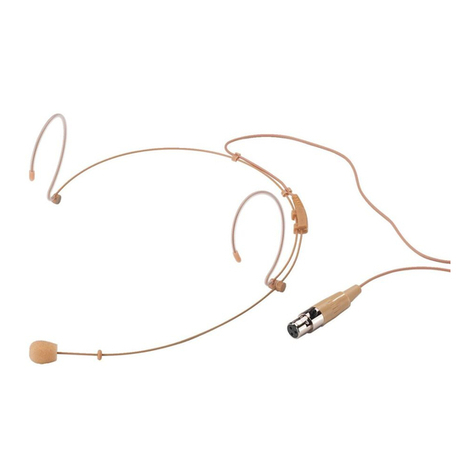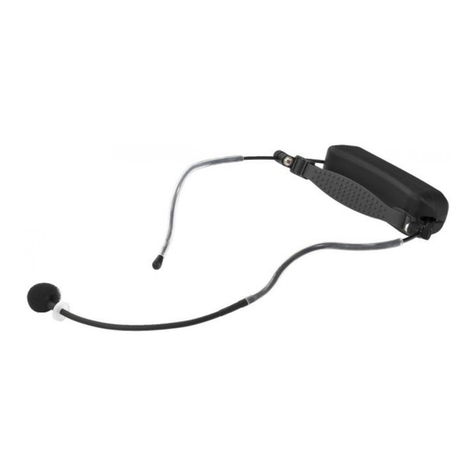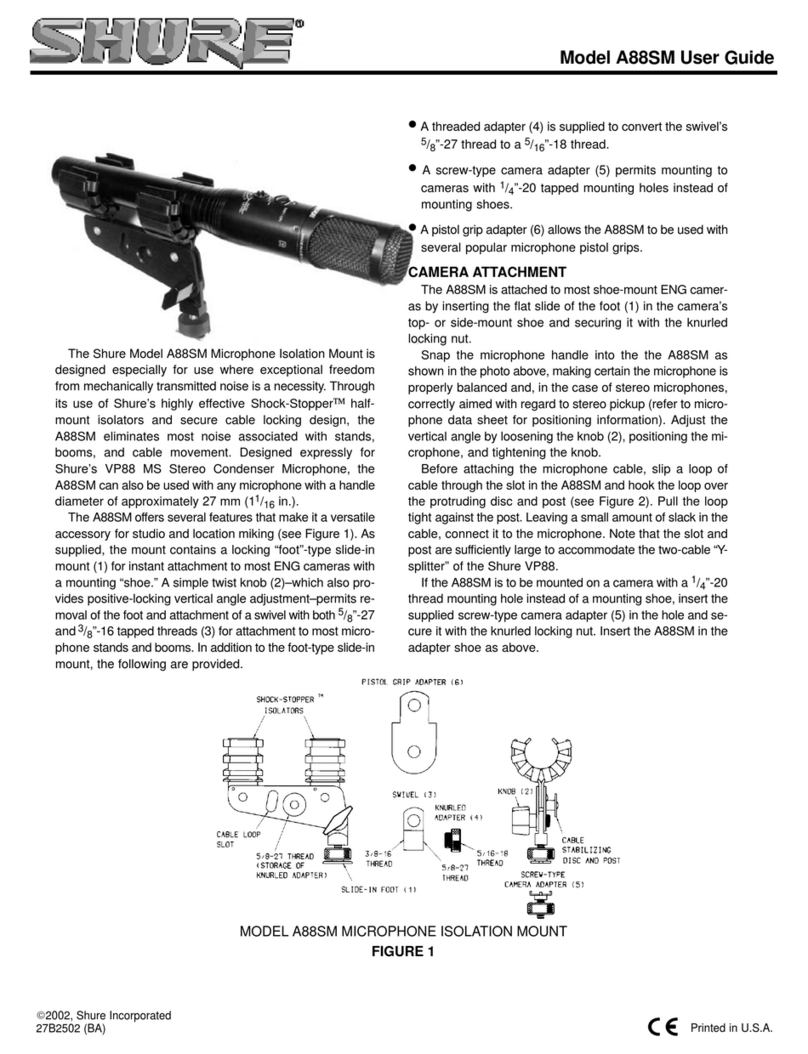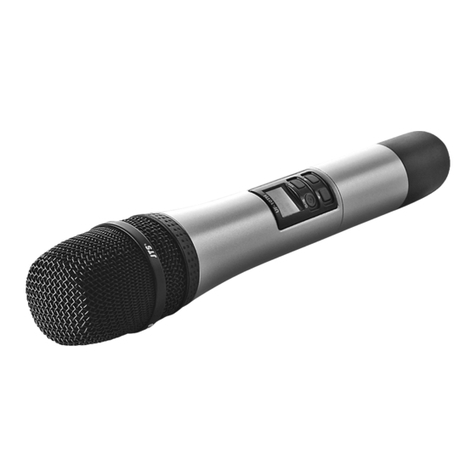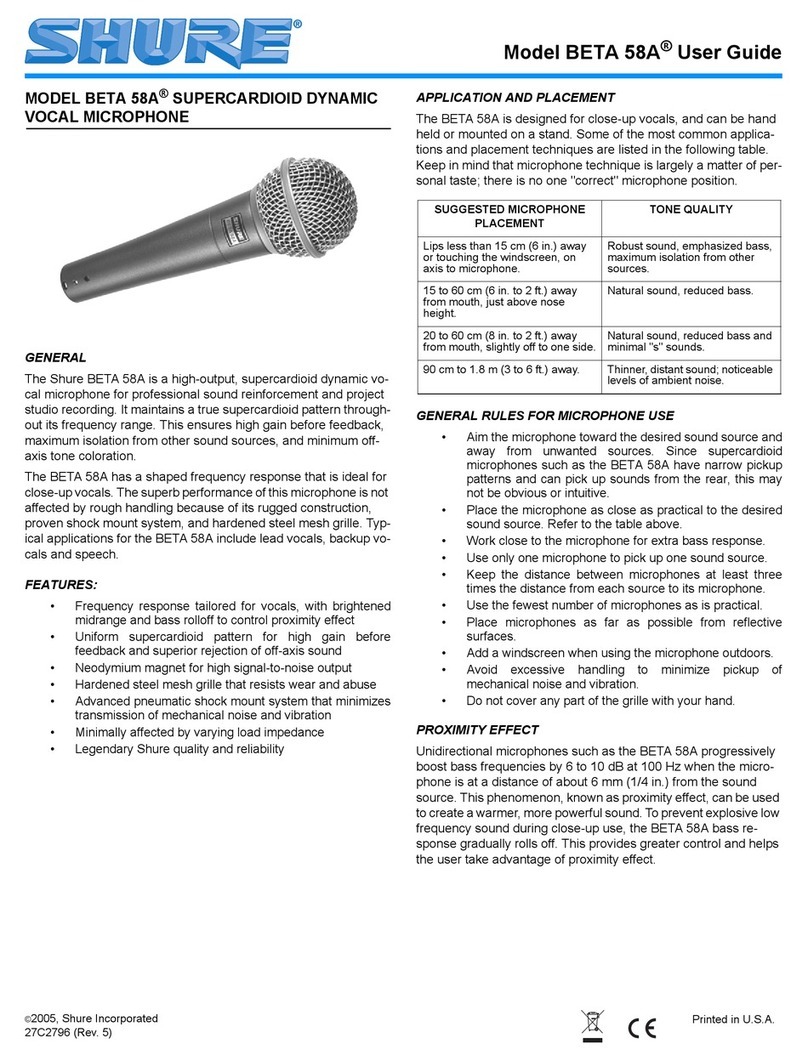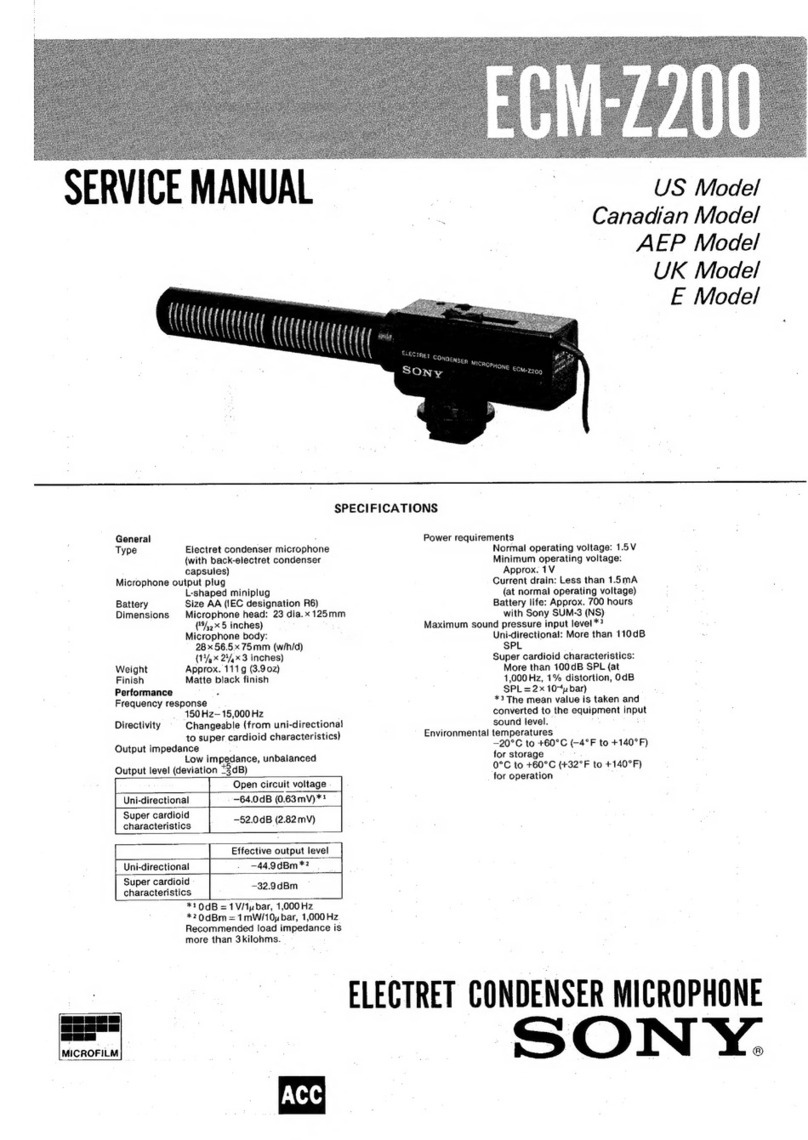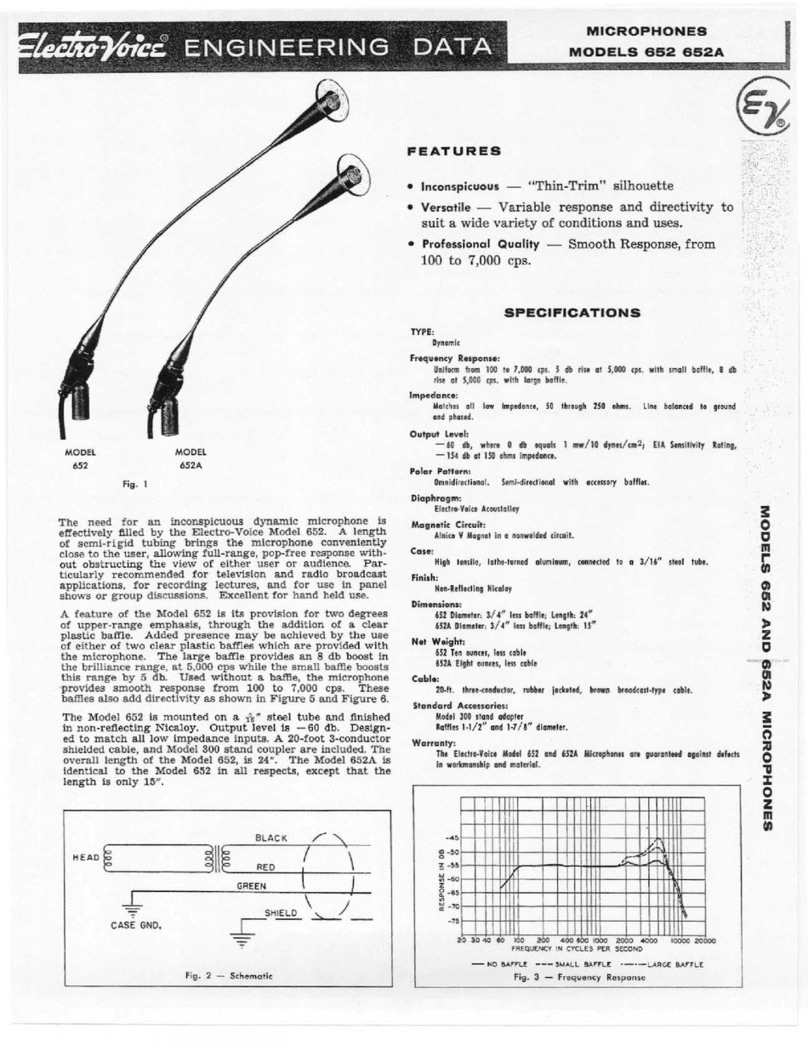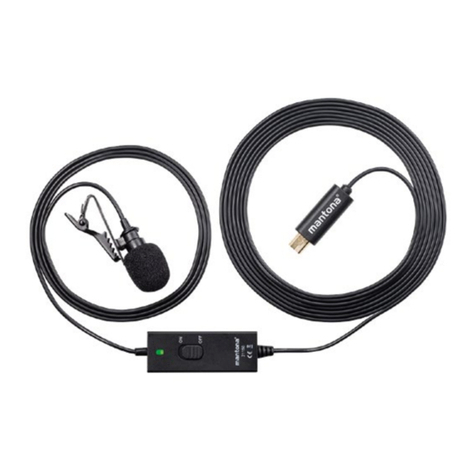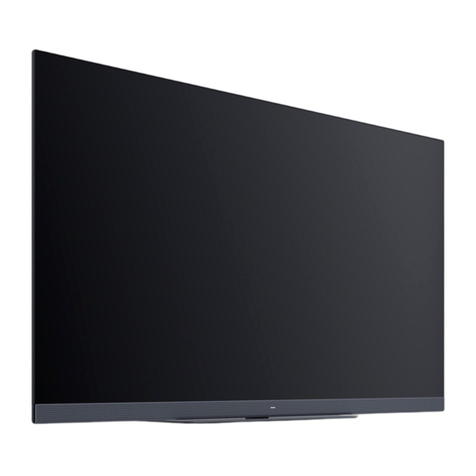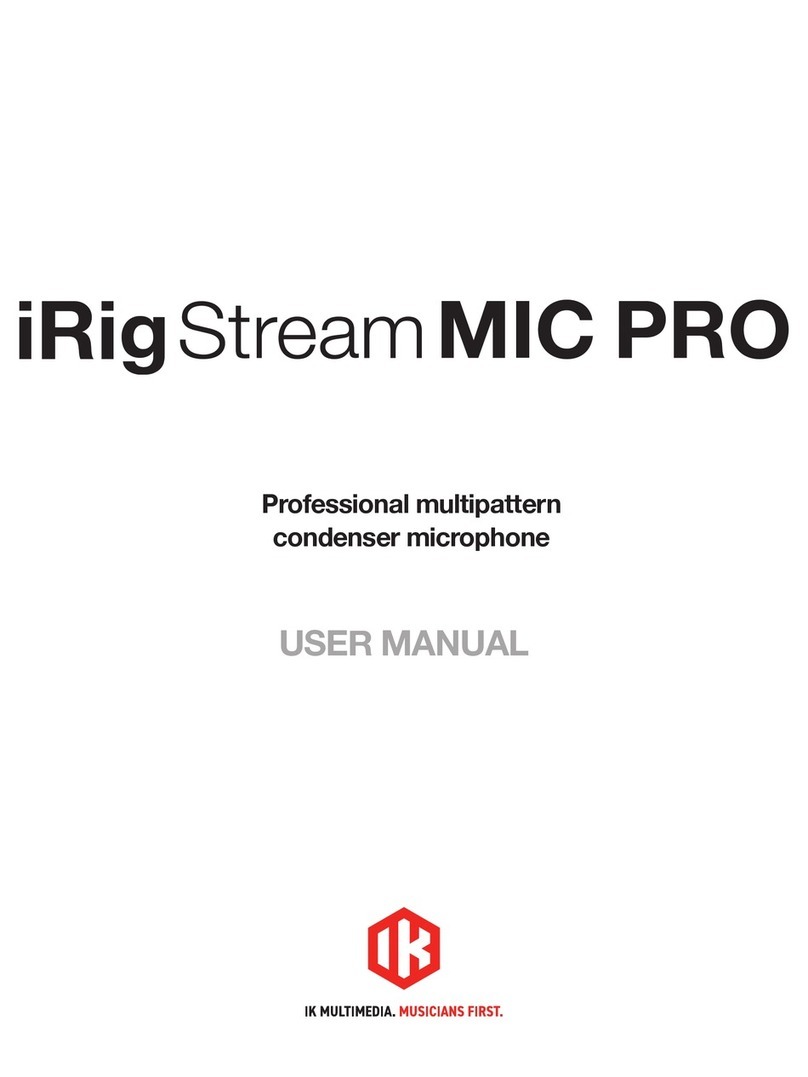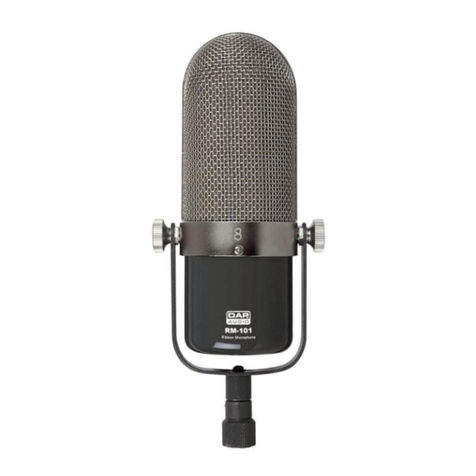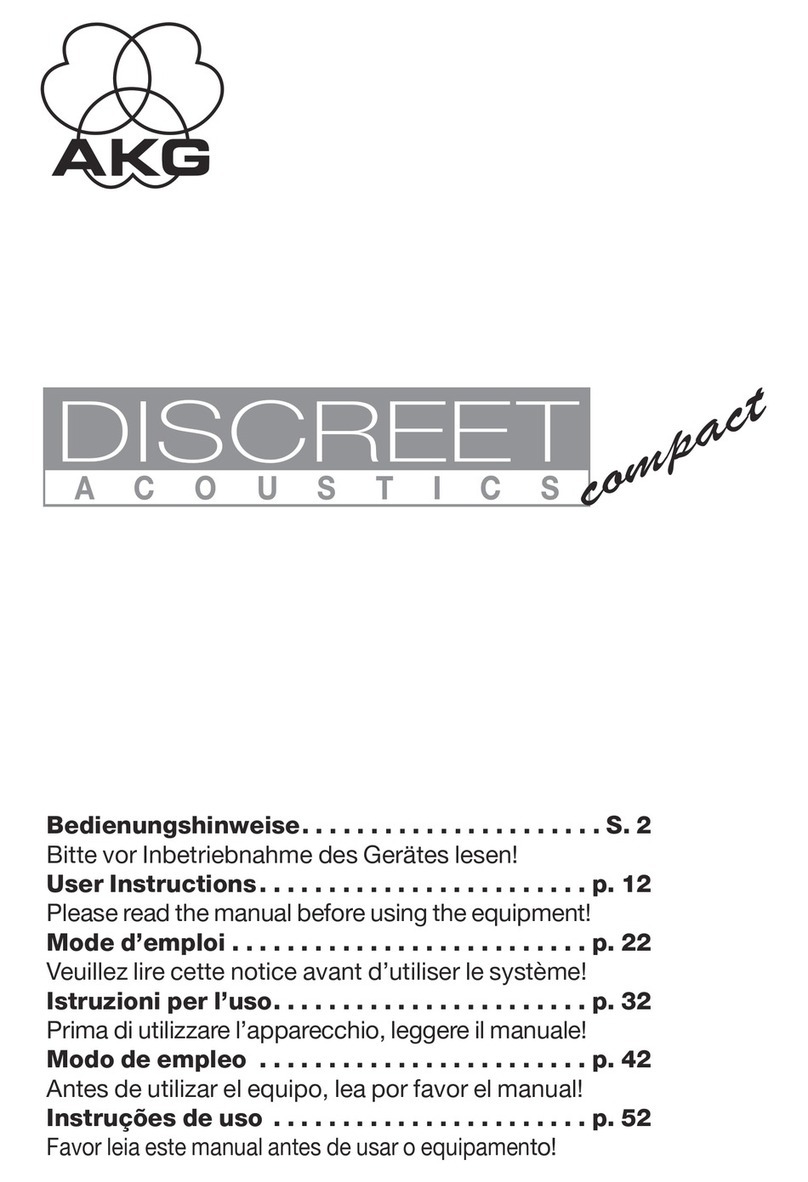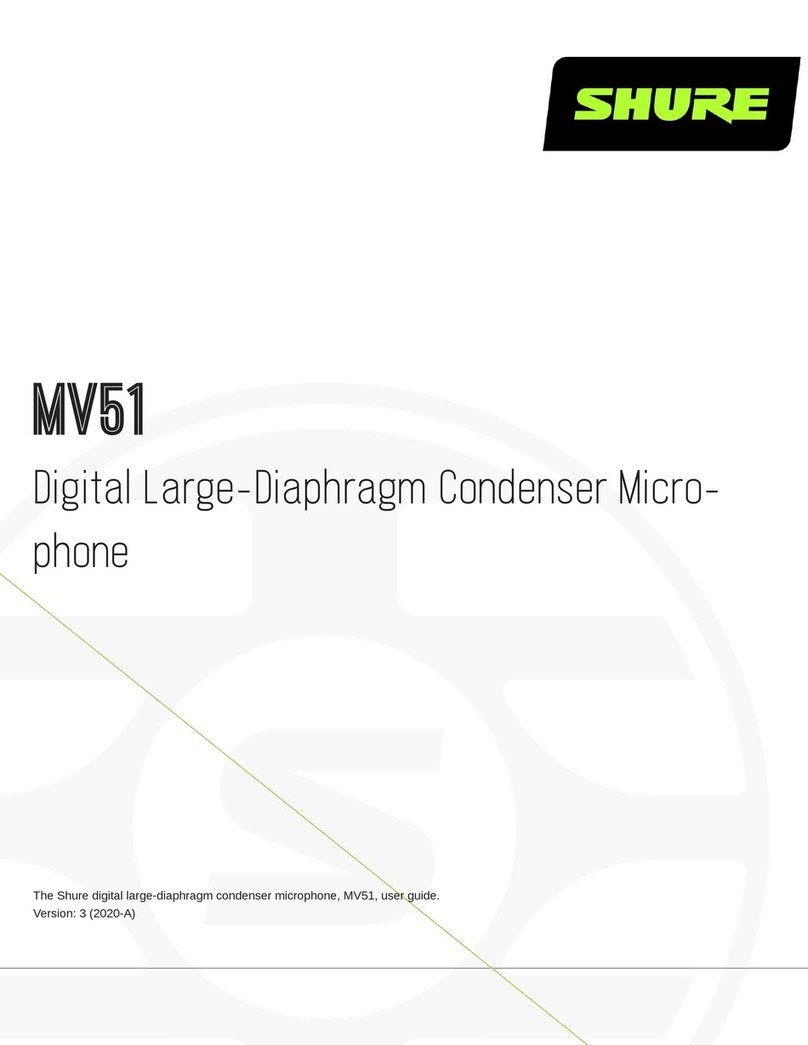Microphone dynamique
Veuillez lire la présente notice avec attention avant le
fonctionnement et conservez-la pour pouvoir vous y
reporter ultérieurement.
1Possibilités d’utilisation
Le microphone TXA-100DM, de petites dimensions,
est spécialement conçu pour des utilisations de dis-
cours. Il se combine parfaitement avec les systèmes
amplifiés mobiles TXA-110 et TXA-120 de MONACOR.
Nous recommandons le cordon micro spiralé TXA-
100MC pour le relier à ces systèmes amplifiés.
2Conseils importants d’utilisation
Le microphone répond à toutes les directives néces-
saires de l’Union européenne et porte donc le sym-
bole .
●Protégez le microphone de tout type de projections
d’eau, des éclaboussures, d’une humidité de l’air
élevée et de la chaleur (plage de température de
fonctionnement autorisée : 0 – 40 °C).
●Nous déclinons toute responsabilité en cas de dom-
mages matériels ou corporels si le microphone est
utilisé dans un but autre que celui pour lequel il a
été conçu, s’il n’est pas correctement branché, uti-
lisé ou réparé par un technicien habilité ; en outre,
la garantie deviendrait caduque.
Lorsque le microphone est définitivement
retiré du service, vous devez le déposer dans
une usine de recyclage de proximité pour
contribuer à son élimination non polluante.
TXA-100DM Best.-Nr. 17.2460
Copyright©by MONACOR INTERNATIONAL GmbH & Co. KG, Bremen, Germany. All rights reserved. A-0765.99.01.08.2007
®
3Fonctionnement
1) Pour relier le microphone, un cordon micro est né-
cessaire, par exemple TXA-100MC de MONACOR.
Reliez le microphone via le cordon à une entrée
micro d’un appareil audio (table de mixage, ampli-
ficateur, enceinte active …).
2) Allumez le microphone : mettez l’interrupteur (1)
sur la position supérieure.
3) Tenez le microphone près de la bouche et parlez.
4) En cas de longues pauses d’utilisation, vous
pouvez éteindre le microphone avec l’interrupteur
(position inférieure) de manière à ne pas capter des
bruits non souhaités.
4Caractéristiques techniques
Type microphone : . . . . . . microphone dynamique
pour le discours
Directivité :. . . . . . . . . . . . cardioïde
Branchement : . . . . . . . . . connexion XLR 3 pôles
Dimensions : . . . . . . . . . . Ø 40 mm ×107 mm
Poids : . . . . . . . . . . . . . . . 110 g
Tout droit de modification réservé.
Microfono dinamico
Vi preghiamo di leggere attentamente le presenti istru-
zioni prima della messa in funzione e di conservarle
per un uso futuro.
1Possibilità d’impiego
Il microfono TXA-100DM con la sua struttura piccola,
maneggevole, è previsto specialmente per applica-
zioni di lingua parlata. Si impiega in modo ottimale
insieme ai sistemi mobili di amplificazione TXA-110 e
TXA-120 di MONACOR. Per il collegamento con
questi sistemi si consiglia il cavo spiralato per micro-
fono TXA-100MC.
2Avvertenze importanti per l’uso
Il microfono è conforme a tutte le direttive richieste
dell’UE e pertanto porta la sigla .
●Proteggere il microfono dall’acqua gocciolante e
dagli spruzzi d’acqua, da alta umidità dell’aria e dal
calore (temperatura d’impiego ammessa fra 0 °C e
40 °C).
●Nel caso d’uso improprio, di collegamenti sbagliati,
di impiego scorretto o di riparazione scorretta del
microfono, non si assume nessuna responsabilità
per eventuali danni consequenziali a persone o a
cose e non si assume nessuna garanzia per il
microfono.
Se si desidera eliminare il microfono definiti-
vamente, consegnarlo per lo smaltimento ad
un’istituzione locale per il riciclaggio.
3Messa in funzione
1) Per il collegamento del microfono è richiesto un
apposito cavo, p. es. TXA-100MC di MONACOR.
Collegare il microfono con l’ingresso microfono di
un apparecchio audio (mixer, amplificatore, cassa
attiva ecc.) per mezzo del cavo di collegamento.
2) Accendere il microfono: portare l’interruttore (1) in
posizione superiore.
3) Tenere il microfono vicino alla bocca e parlare.
4) Nel caso di pause prolungate, il microfono può
essere spento (posizione inferiore). In questo
modo si evita di riprodurre rumori non desiderati.
4Dati tecnici
Tipo microfono: . . . . . . . . microfono dinamico
per lingua parlata
Caratteristica direzionale: cardioide
Contatto: . . . . . . . . . . . . . XLR a 3 poli
Dimensioni: . . . . . . . . . . . Ø 40 mm ×107 mm
Peso: . . . . . . . . . . . . . . . . 110 g
Con riserva di modifiche tecniche.
1
F B CH
I
